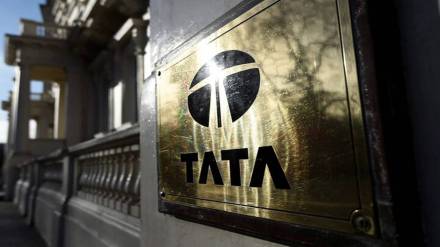By Anand Desai, Managing Partner, DSK Legal
Philanthropy requires money. The intent of industry is to generate money. Both charitable trusts and business corporates benefit from good governance. On the face of it, they are compatible. The ideal that industry can be used to generate money for the greater good has stood the test of time, and indeed shone bright in the case of the Tata Group—one of India’s oldest, largest, and most respected business conglomerates that has developed a global reputation across widely diversified businesses.
Tata Trusts are public charitable trusts established to pursue their respective charitable purposes. Their affairs are managed by their trustees who are required to function in accordance with the terms of the trust and exercise the same care as a man of ordinary prudence does when dealing with his own affairs, funds, or property. Tata Trusts own about 66% of the equity of Tata Sons Private Limited. The extensive charitable work undertaken by Tata Trusts is mainly financed by the dividend income received from Tata Sons (Rs 1,615 crore in FY25 when Tata Sons posted a profit of Rs 26,232 crore).
Over 300 companies across industries under Tata Sons
The Tata Group encompasses more than 300 companies including listed entities engaged in sectors ranging from engineering to consultancy to hospitality—all under the umbrella of Tata Sons. Each of these entities are profit-driven and professionally managed.
The association between Tata Trusts and Tata Sons does not end with this monetary contribution. Tata Trusts, collectively being the majority shareholders, have considerable control over the affairs of Tata Sons. And this is where trouble can brew, as shown by recent events, because such control, inevitably, raises questions about governance and conflict of interest.
Tata Trusts holds decisive control over Tata Son’s crucial decisions
The extent of Tata Trusts’ control over the Tata Group is apparent from their rights incorporated in the articles of association of Tata Sons. They have the right to nominate one-third of the directors on the board of Tata Sons. All board decisions of Tata Sons require the affirmative vote of a majority of the directors appointed by Tata Trusts. These include approval of a five-year strategic plan with an assessment of the proposed strategic path of Tata Sons, and business and investment opportunities. Board approval is also required for investments exceeding Rs 100 crore, increase in authorised or paid-up share capital or allotment of shares, or any matter affecting the shareholding of Tata Trusts in Tata Sons. Even matters affecting the shareholding of Tata Sons in other Tata companies or the exercise of Tata Sons’ voting rights at the general meetings of Tata companies require Tata Sons’ board approval.
History tells us that this control has been exercised—sometimes a little too zealously—leading to allegations that the Tata Trusts’ oversight is too intrusive for professionally managed businesses. In this context, the majority ownership and control of Tata Trusts over the Tata Group through Tata Sons raises an important legal and governance question—whether a philanthropic organisation should exercise control over a profit-driven business enterprise?
The concept of for-profit companies being owned by non-profit self-governing organisations who use the business profits for social development, rather than for personal benefit, is an unusual idea. It promotes public benefit over private enrichment, giving capitalism a conscience. While this idea is bold, it is not unprecedented. Famous examples of businesses being owned by philanthropic foundations (often called enterprise foundations) include the Danish pharmaceutical multinational Novo Nordisk, Swiss watch manufacturer Rolex, and German manufacturing giant Bosch. The fact that the Tata Group has flourished for so long proves that this idea does not solely exist in the realm of theory, but can be practically implemented.
However, a closer look reveals potential conflicts. Firstly, trustees of charitable organisations are legally and morally bound to act solely in furtherance of their trusts’ objectives which are related to public welfare and social good, not private gain. Their mandate is welfare of beneficiaries, not profitability. Hence, is it really possible for such trustees to also faithfully act as controlling shareholders of a massive business conglomerate—which is driven by considerations of growth, competition, and profits? By their very nature, these dual obligations can give rise to a dichotomy between the moral versus the managerial. For instance, should trustees favour a more conservative management of the business conglomerate to protect its assets/income to ensure stable dividends for charitable activities, or should they pursue riskier opportunities to explore business growth even if it may jeopardise funding for charitable goals.
The nature of this dual role is further complicated by the presence of competing shareholder groups in the business conglomerate—who may have divergent ideas about its strategic direction. In such a case, should the trustees be allowed to have any type of relationship with the competing groups, and should the shareholder group have the right to nominate trustee/s of the trust? The Tata story becomes a case in point in this context with former and current trustees of Tata Trusts being part of the Tata family or the Shapoorji Pallonji Group, the largest private shareholder with 18% of Tata Sons.
At a time when several wealthy families are examining trust structures for holding the family wealth, the recent highly publicised disagreements among the Tata Trusts’ trustees—first over the reappointment of Vijay Singh as a nominee director on Tata Sons’ board, and then over the continuing trusteeship of Mehli Mistry—mark a second major conflict in the Tata Group in less than a decade. The previous one was in 2016, when Cyrus Mistry was removed from chairmanship of Tata Sons, exposing fissures in Tata Group’s governance structure. There are learnings in each of such episodes when structuring family legacies.
